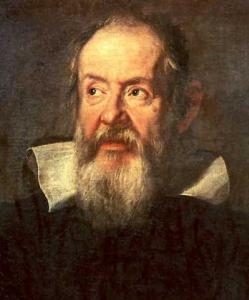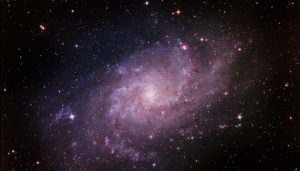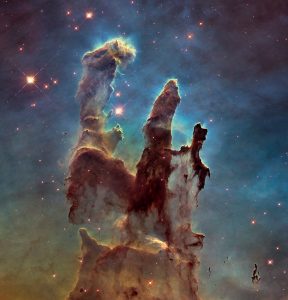By a strange coincidence, it was in 1633 CE, that the French Philosopher René Descartes first began to ponder how the Solar System was formed. Coincidence, because that was the very year that Galileo was tried by the Inquisition for supporting the theory that the Sun, and not the Earth stood in the center of the Universe.


Like Galileo, Descartes accepted Copernicus’ hypothesis that the Earth was a planet that circled around the Sun and not the Sun that circled the Earth. The Copernican picture of all of the planets orbiting around the Sun as if in a whirlpool led Descartes to speculate that originally the Solar System had formed from a vortex of swirling particles which condensed into the Sun and the planets.
Because Newton had not yet discovered his theory of Gravity, Descartes had no idea what had caused the condensation and because of his own fear of the Inquisition his ideas were only published after his death in 1664. Nevertheless Descartes basic idea of a rotating cloud that condenses turned out to be basically correct.
In was more than a century later in 1796 that the French Mathematician Pierre-Simon Laplace first attempted to construct a detailed model of how planetary systems formed. In addition to Newton’s theories Laplace also benefited from the observations of 18th century astronomers like Charles Messier and William Herschel who had discovered a large number of fuzzy, swirling ‘nebula’, in the night sky. To Laplace these nebula were Solar Systems in the process of formation, baby stars and planets. The images below show two of these ‘nebula’ the Andromeda (Messier Catalog M31) and the Triangulum (M33).


Unfortunately it turned out that many of those ‘baby solar systems’, in particular Andromeda and Triangulum were actually found to be other galaxies!!! Vast, huge collections of billions of stars. Other physicists soon discovered other problems with Laplace’s ideas as well so work on planetary formation stalled for about a century.
The Astronomer Forest Moulton in 1900 discovered one interesting fact about the Solar System that any theory of planetary formation must account for. It is simply that, while the Sun contains 99.8% of all of the mass in the Solar System, the planets contain 99% of the angular momentum. Throughout the early 20th century this simple fact became the downfall of several theories of how the planets formed.
It wasn’t until 1972 that the Soviet astronomer Victor Safronov revived the nebula theory of Laplace with his Solar Nebula Disk Model (SNDM). Safronov and his model received considerable attention when several young stars, such as Beta Pictoris, were found to be surrounded by disks of cool dust exactly as predicted by the (SNDM) theory.
Further observations by space telescopes such as the Infrared Astronomical Satellite and of course the Hubble Space Telescope have succeeded in discovering enormous ‘cosmic nurseries’ such as the Orion nebula (M42) and the famous ‘pillars of creation’ in the Eagle nebula (M16). See images below.


Now astronomers using the Very Large Telescope at The European Southern Observatory have succeeded in looking deep into one of the disks of gas and dust that surround a baby star to see a baby planet in the act of forming. The baby planet is orbiting around a young orange dwarf star named PDS 70 at a distance from Earth of 370 Light Years. Looking at the image below the planet is the bright blog to the lower right of the black dot. The dot itself is a mask inserted in the telescope used to eliminate the light of the dwarf star which would otherwise overwhelm the faint light of the proto-planet.

Astronomers at the Max Planck Institute who conducted the research had discovered a protoplanetary disk around PDS 70 back in 2012 which led them to attempt to image the proto-planet itself. Based upon their data the team, led by astronomer Miriam Keppler, estimate that the planet is about two to three times the mass of Jupiter orbiting its star at a distance of three billion kilometers, about the distance between Uranus and the sun.
Science works best when there is a strong back and forth between theory and observation / experiment. Our theories of planetary formation improve with every new observation while the new theories give the astronomers a better idea of what to look for in the sky!
